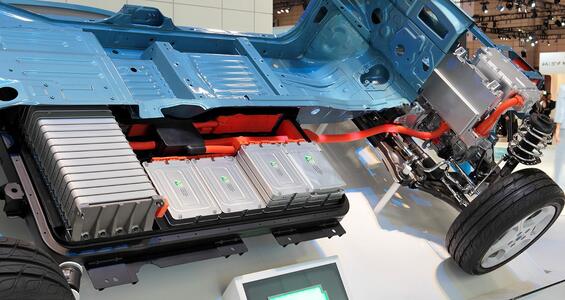Download this Fact Sheet as a PDF
Things to Consider
Safety Hazards
The main dangers in hybrid and electric vehicle repair are electrocution and the possibility of the car turning on accidentally while work is being performed. These serious risks make safety training a priority.
The Ability of Workers to Recognize Hybrid and Electric Vehicles
While some hybrids are easily recognizable, some are not necessarily distinguishable from their gas-only counterparts. A mix-up could create serious problems for workers who are not able to tell the difference.
To address safety concerns, car companies have developed certain indicators that can help workers identify the vehicles:
Color-coded high voltage cables in hybrid and electric vehicles warn of their potential danger. Usually these are orange but some models have blue cables instead. Check with the car manufacturer to identify the correct color coding.
Safety Mechanisms
Many hybrid and electric vehicle manufacturers have begun installing a safety switch or mechanism to disconnect the battery from the vehicle’s electrical system. The location of this will depend on the model. Check with the car manufacturer to find out about safety mechanism for each individual care model serviced in your shop.
Safety Best Practices
Workers should avoid contact with high-voltage cables unless the high-voltage battery has been disconnected. Proper personal protective equipment (PPE) includes heavy, rubber, Class 0 rated gloves. Ordinary latex or neoprene shop gloves are NOT thick enough to protect against a high-voltage shock. Workers should inspect their gloves to make sure they do not have any pin holes, cracks, tears or splits that would allow direct contact between skin and voltage. Other precautions include:
- Turning the ignition OFF and making sure that the key or key fob is away from the vehicle before it is serviced or repaired.
- Ensuring the READY light is not on.
- Waiting 15 minutes before working on the vehicle after the battery has been disconnected.

A lithium car battery with orange indicator cables.
Find Additional Information
Shop owners must provide workers who repair alternative fuel vehicles with proper safety training. See below for additional information and training resources:
- Visit the I-CAR website to register for classes on safety while working on alternative fuel vehicles safety.
- ASE offers Light Duty Hybrid / Electric Vehicle Certification. The test information and overview can be found here.
- The Auto Career Development Center in Worcester, MA, offers classes on hybrid repair safety.
Contact
Phone
You will be connected to the person who can best answer your questions.